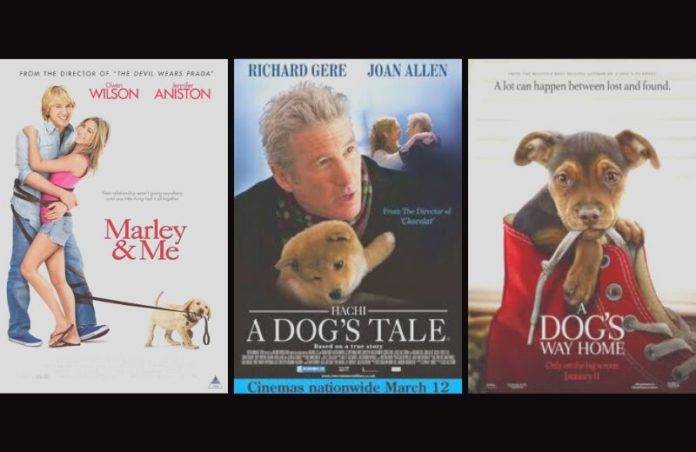[ad_1]
In the United Kingdom and the United States, the most commonly reported cause of death in dogs is cancer.1,2 When a patient is diagnosed with cancer, veterinarians may be faced with many challenging questions. Clients may ask about prior diets they have fed the dog and about feeding “cancer” diets and/or supplements in the future. One study reported that 51% of owners whose pet had cancer expressed distrust in their pet’s diet and 90% reported having changed the diet when they learned of the pet’s cancer diagnosis.3 Without proper guidance, clients may shift their feeding practices toward home-prepared or other diet types, which can be problematic. Reviews of publicly available pet recipes for raw or cooked home-prepared diets have shown these diets to be unbalanced, to present the risk of introducing foodborne illness, and/or to have insufficient instructions to ensure proper nutrition.4-11
To advise clients, veterinarians need to rely on scientific evidence while respecting clients’ needs and perspectives. Human oncology patients may use nutrition, supplements, and natural products to empower themselves, attempt to take control of their health, and increase their quality of life. Acknowledging the concept of humanization (i.e., considering pets as family members), it is logical to expect and respect these same emotional needs when clients are facing cancer in their pets. Clients are highly motivated to be a part of the healthcare of their pets with cancer and seek nutrition recommendations. Thus, the veterinarian and healthcare team need to educate clients about their pet’s nutrition at the time of cancer diagnosis and throughout treatment.
Cancer Diets
Although research on cancer in dogs and cats continues to advance while the availability of treatments (e.g., new drugs, immunotherapy, radiation protocols) and palliative care increases, research on nutrition for veterinary cancer patients remains scarce. Most reviews focus on the management of anorexia or cachexia.12,13 Other than a study of lymphoma in dogs, no published feeding trials have examined the effects of different diet nutrient profiles on dogs that have cancer of various stages or are undergoing treatment.14 Regardless of this lack of research, clients want information about popular cancer diets, such as low-carbohydrate and/or ketogenic diets. Because cancer cell metabolism is often the rationale for advocating these types of cancer diets for pets, veterinarians should understand some of the underlying research.
Low-/No-Carbohydrate Diets
The best-known cancer cell metabolic abnormality was first described by Otto Warburg in the 1920s.15 Warburg reported that compared with normal tissue, tumors showed unusually high rates of glucose uptake and lactate production even in the presence of oxygen. This aerobic glycolysis, now called the Warburg effect15,16 has given rise to the concept of low- or no-carbohydrate diets to “starve” cancer cells. However, subsequent cancer cell metabolism studies have determined that not all cancer cells survive by using aerobic glycolysis only; they also have metabolic flexibility.17-22 This flexibility involves adaptively upregulating and downregulating carbohydrate, fat, and protein metabolism as needed in response to nutrient availability, tumor microenvironment, and even cancer treatments. Some studies found cancer cell lines that use fat metabolism; others found different levels of carbohydrate, fat, and protein metabolism within the same cancer cells in solid tumors. These studies demonstrate that the nutrition recommendation to limit carbohydrates for patients with cancer is an oversimplification.
Ketogenic Diets
Another popular cancer diet that clients may ask about is a ketogenic diet. Ketogenic diets have the majority of total calories coming from fat, some as high as 80% to 90%. The macronutrient ratio of the ketogenic diet induces a metabolic shift toward fatty acid oxidation and hepatic ketogenesis, elevating ketone bodies in the blood. Again, the concept is to starve cancer cells of needed glucose for metabolism while allowing normal host cells to adapt and survive by using ketone bodies.23-25 Studies of mice and a few humans with advanced cancers (e.g., glioblastoma) have demonstrated inhibition of tumor growth in those eating ketogenic diets, but the results are controversial.26-28 Use of ketogenic diets for children and dogs with seizure disorders has shown some success.29-31 A current veterinary therapeutic diet (VTD) for dogs with seizures contains medium-chain triglycerides rather than high amounts of fat.32 Currently, for veterinary patients with cancer, there are no clinical research studies to support the use of ketogenic diets.
Recommendations
Veterinarians should inform clients that feeding low-carbohydrate or ketogenic diets to all cancer patients is not supported by the research and may instead be problematic (BOX 2). Nutrition recommendations for each cancer patient should be individualized. The veterinarian should assess each patient with specific cancer and treatment plan and generate a personalized nutrition plan that will be instituted, monitored throughout treatment, and changed as needed.
Nutrition Plans
A nutrition assessment for the cancer patient should include diet type, feeding method, patient appetite, and client’s attitude toward the patient’s current diet. The patient examination should include current and past body weights, body condition score, and muscle mass score. It is imperative to identify patients that are currently malnourished and inappetent or have signs of gastrointestinal dysfunction. A nutrition assessment of humans reported that 40% to 80% of cancer patients experience diverse degrees of malnutrition, depending on tumor subtype, location, stage, and treatment strategy.33,34 Inadequate nutrition can result from cancer itself or from its treatment. Effects may include physical damage to organs; disruption of the ability to eat normally; and damage to the intestinal tract, resulting in malabsorption.
For human cancer patients, initial and ongoing nutrition assessments are used for the early identification of malnutrition and cancer cachexia.35-37 Cancer cachexia is defined as a collection of metabolic abnormalities associated with irreversible weight loss in tumor-bearing patients and is characterized by a loss of lean body tissue, with or without fat mass. Because cachexia is not routinely recognized in veterinary medicine, the veterinary team should repeatedly assess the patient during cancer treatment/management.37-39 Guidelines for veterinary patients have been based on body weight assessment and trends derived from nutrition assessment protocols for human cancer patients. These guidelines help veterinarians determine when to institute a new nutrition plan and/or refer the patient to an American College of Veterinary Nutrition (ACVN, acvn.org) Board Certified Veterinary Nutritionist.33,38,39
Instituting a nutrition plan means identifying a potentially better diet and/or feeding plan. The authors prefer to use VTDs rather than over-the-counter (OTC) diets because VTD nutrient content is more easily accessible, digestibility can be higher, and they may be appropriate for gastrointestinal problems resulting from treatments or concurrent disease states. VTDs for joint, dermatologic, and/or gastrointestinal problems may be recommended for cancer patients because they may contain specific nutrients or functional ingredients (e.g., eicosapentaenoic acid, docosahexaenoic acid, fiber, antioxidants).14,40 The benefits of VTDs compared with OTC pet foods should be communicated to the client.41 For cancer patients that have undergone significant weight loss, persistently lose weight, or have a rapidly progressive/unresponsive cancer, referral to an ACVN Board Certified Veterinary Nutritionist should be discussed.
Effects of Body Weight
Studies involving humans have indicated that dietary (caloric) intake profoundly affects cancer therapy outcomes as measured by survival rates and quality of life.33,35 A retrospective study of dogs with lymphoma or osteosarcoma reported decreased survival times among dogs with lymphoma that were underweight at the time of diagnosis and improved survival times among those that gained weight by 10% or more compared with dogs that maintained or lost weight.42 The authors concluded that weight loss during cancer treatment indicated a poor response to treatment, progressive disease, or suboptimal nutrition. Simply put, the priority is to maintain patients’ body weight by keeping them eating.
The Underweight Patient
For underweight patients or those losing weight, assisted feeding for the short or long term should be considered early to improve the patient’s quality of life and outcomes. Many veterinarians recommend intervention after 3 to 5 days of anorexia; however, to prevent malnutrition and cachexia, nutrition interventions for hyporexic patients (consuming less than resting energy requirements) should be considered early in the treatment plan (i.e., within the first week of case management). Adjustment to the nutrient profile is required for patients with comorbidities (e.g., liver or kidney disease, pancreatitis, hyperlipidemia). Food intolerances or allergies may limit ingredient or nutrient options. Should food aversions develop, some patients will need several diet options or a rotation of foods and/or textures. Often homemade diets or fresh food diets may be more palatable and appealing for dogs or cats with variable appetites. The top priority is to provide palatable food that the patient will readily consume and tolerate and that will prevent weight loss. To increase daily caloric intake, the veterinary team can recommend increasing feeding frequency or hand-feeding a palatable diet while leaving dry food accessible throughout the day. The veterinary team can also consult with a certified nutritionist to provide different nutrition plans and feeding strategies for clients of dogs or cats with cancer.
The Overweight/Obese Patient
Research on obesity and veterinary cancer patients is insufficient. Romano et al. reported that obesity was not associated with adverse outcomes among dogs with lymphoma or osteosarcoma.42 That finding indicates that it would be logical to avoid aggressive weight loss programs for veterinary patients with cancer that will affect their life span (i.e., those more likely to succumb to cancer than to the effects of obesity). If weight is severely limiting the patient’s mobility and affecting the quality of life, a cautious weight-reduction plan may be considered. Marshall et al. found that a weight reduction of 6% improved lameness scores in osteoarthritic dogs;43 therefore, this guideline may be reasonable for cancer patients. A diet formulated for weight loss should be used because adult maintenance or weight-management diets may result in nutrient deficiencies.44 The potential benefits of a weight-loss plan should be discussed with clients because reducing calorie intake in a cancer patient may not align with their needs or beliefs.
New Concept: Intermittent Fasting
A growing area of nutrition research for humans with cancer is intermittent fasting. The concept is that during fasting, normal cells are free to enter a “cleanup” phase, in which damaged cell organelles and misfolded proteins are cleared, a process known as autophagy.45 Lack of autophagy or dysfunctional autophagy may contribute to many diseases, including cancer. Autophagy may be modified by nutrition restriction, thereby modulating and enhancing the efficacy of anticancer therapies while protecting normal cells from the side effects of chemotherapy.46 One study documented decreased incidence of delayed-type vomiting associated with doxorubicin in dogs with lymphoma who fasted for 24 hours before treatment.47 Evaluations of the effects of fasting on treatment-emergent adverse events and outcomes are ongoing.
Summary
Veterinarians face multiple questions and challenges with regard to patients with cancer. They need to rely on scientific evidence while also addressing clients’ perspectives and needs. Answering client questions, discussing the role of diet, and instituting appropriate nutrition plans provide an opportunity to improve the management of the veterinary cancer patient. Educating clients and providing thoughtful, personalized nutrition plans seem to increase the quality of patients’ lives while improving client/veterinarian relationships.
References:
1. Adams VJ, Evans KM, Sampson J, Wood JL. Methods and mortality results of a health survey of purebred dogs in the UK. J Small Anim Pract 2010;51(10):512–524. doi:10.1111/j.1748-5827.2010.00974.x
2. Fleming JM, Creevy KE, Promislow DE. Mortality in North American dogs from 1984 to 2004: an investigation into age-, size-, and breed-related causes of death. J Vet Intern Med 2011;25(2):187–198.
3. Rajagopaul S, Parr JM, Woods JP, et al. Owners’ attitudes and practices regarding nutrition of dogs diagnosed with cancer presenting at a referral oncology service in Ontario, Canada. J Small Anim Pract 2016;57(9):484–490. doi:10.1111/jsap.12526
4. Remillard RL. Homemade diets: attributes, pitfalls, and a call for action. Top Companion Anim Med 2008;23(3):137–142.
5. Parr JM, Remillard RL. Handling alternative dietary requests from pet owners. Vet Clin North Am Small Anim Pract 2014;44(4):667-688.
6. Heinze CR, Gomez FC, Freeman LM. Assessment of commercial diets and recipes for home-prepared diets recommended for dogs with cancer. JAVMA 2012;241(11):1453–1460. doi:10.2460/javma.241.11.1453
7. Stockman J, Fascetti AJ, Kass PH, Larsen JA. Evaluation of recipes of home-prepared maintenance diets for dogs. JAVMA 2013;242(11):1500–1505. [Erratum in: JAVMA 2014;245(2):177.]
8. Strohmeyer RA, Morley PS, Hyatt DR, et al. Evaluation of bacterial and protozoal contamination of commercially available raw meat diets for dogs. JAVMA 2006;228(4):537–542. doi:10.2460/javma.228.4.537
9. Morelli G, Bastianello S, Catellani P, Ricci R. Raw meat-based diets for dogs: survey of owners’ motivations, attitudes and practices. BMC Vet Res 2019;15(1):74. doi:10.1186/s12917-019-1824-x
10. Weeth LP. Focus on nutrition: home-prepared diets for dogs and cats. Compend Contin Educ Vet 2013;35(3):E3.
11. Morgan SK, Willis S, Shepherd ML. Survey of owner motivations and veterinary input of owners feeding diets containing raw animal products. PeerJ 2017;5:e3031. doi:10.7717/peerj.3031
12. Ogilvie GK, Vail DM. Nutrition and cancer: recent developments. Vet Clin North Am Small Anim Pract 1990;20(4):969–985. doi:10.1016/s0195-5616(90)50080-7
13. Ogilvie GK. Interventional nutrition for the cancer patient. Clin Tech Small Anim Pract 1998;13(4):224–231. doi:10.1016/S1096-2867(98)80007-8
14. Ogilvie GK, Fettman MJ, Mallinckrodt CH, et al. Effect of fish oil, arginine, and doxorubicin chemotherapy on remission and survival time for dogs with lymphoma: a double-blind, randomized placebo-controlled study. Cancer 2000;88(8):1916–1928.
15. Warburg O. On the origin of cancer cells. Science 1956;123(3191):309–314. doi:10.1126/science.123.3191.309
16. McQuown B, Burgess KE, Heinze CR. Preliminary investigation of blood concentrations of insulin-like growth factor, insulin, lactate and β-hydroxybutyrate in dogs with lymphoma as compared with matched controls. Vet Comp Oncol 2018;16:262–267.
17. McAndrew PF. Fat metabolism and cancer. Surg Clin North Am 1986;66(5):1003–1012. doi:10.1016/s0039-6109(16)44037-5
18. Ogilvie GK, Ford RB, Vail DM, et al. Alterations in lipoprotein profiles in dogs with lymphoma. J Vet Intern Med 1994;8(1):62–66. doi:10.1111/j.1939-1676.1994.tb03198.x
19. Munir R, Lisec J, Swinnen JV, Zaidi N. Lipid metabolism in cancer cells under metabolic stress. Br J Cancer 2019;120(12):1090–1098.
20. Poljsak B, Kovac V, Dahmane R, et al. Cancer etiology: a metabolic disease originating from life’s major evolutionary transition? Oxid Med Cell Longev 2019;2019:7831952.
21. Rodríguez-Enríquez S, Marin-Hernandez A, Gallardo-Perez JC, et al. Targeting of cancer energy metabolism. Mol Nutr Food Res 2009;53(1):29–48.
22. Boroughs LK, DeBerardinis RJ. Metabolic pathways promoting cancer cell survival and growth. Nat Cell Biol 2015;17(4):351–359.
23. Ward PS, Thompson CB. Metabolic reprogramming: a cancer hallmark even Warburg did not anticipate. Cancer Cell 2012;21(3):297–308.
24. Weber DD, Aminazdeh-Gohari S, Kofler B. Ketogenic diet in cancer therapy. Aging (Albany NY). 2018;10(2):164–165.
25. Licha D, Vidali S, Aminzadeh-Gohari S, et al. Untargeted metabolomics reveals molecular effects of ketogenic diet on healthy and tumor xenograft mouse models. Int J Mol Sci 2019;20(16):3873. doi:10.3390/ijms20163873
26. Noorlag L, De Vos FY, Kok A, et al. Treatment of malignant gliomas with ketogenic or caloric restricted diets: a systematic review of preclinical and early clinical studies. Clin Nutr 2019;38(5):1986–1994.
27. Hagihara K, Kajimoto K, Osaga S, et al. Promising effect of a new ketogenic diet regimen in patients with advanced cancer. Nutrients 2020;12(5):1473.
28. Vergati M, Krasniqi E, Monte GD, et al. Ketogenic diet and other dietary intervention strategies in the treatment of cancer. Curr Med Chem 2017;24(12):1170–1185. doi:10.2174/0929867324666170116122915
29. Araya-Quintanilla F, Celis-Rosati A, Rodriguez-Leiva C, et al. Effectiveness of a ketogenic diet in children with refractory epilepsy: a systematic review [in Spanish]. Rev Neurol 2016;62(10):439–448.
30. Martin-McGill KJ, Jackson CF, Bresnahan R, et al. Ketogenic diets for drug-resistant epilepsy. Cochrane Database Syst Rev 2018;11(11):CD001903. doi:10.1002/14651858.CD001903.pub4
31. Law TH, Davies ES, Pan Y, et al. A randomised trial of a medium-chain TAG diet as treatment for dogs with idiopathic epilepsy. Br J Nutr 2015;114(9):1438–1447. doi: 10.1017/S000711451500313X. [Erratum in: Br J Nutr 2016;115(9):1696.]
32. Molina J, Jean-Philippe C, Conboy L, et al. Efficacy of medium chain triglyceride oil dietary supplementation in reducing seizure frequency in dogs with idiopathic epilepsy without cluster seizures: a non-blinded, prospective clinical trial. Vet Rec 2020;187(9):356.
33. Gómez Candela C, Olivar Roldán J, García M, et al. Assessment of a malnutrition screening tool in cancer patients [in Spanish]. Nutr Hosp 2010;25(3):400–405.
34. Lach K, Peterson SJ. Nutrition support for critically ill patients with cancer. Nutr Clin Pract 2017;32(5):578–586.
35. Fearon KC, Barber MD, Moses AG. The cancer cachexia syndrome. Surg Oncol Clin N Am 2001;10(1):109–126.
36. Mattox TW. Cancer cachexia: cause, diagnosis, and treatment. Nutr Clin Pract 2017;32(5):599–606.
37. Story AL, Boston SE, Kilkenny JJ, et al. Evaluation of weight change during carboplatin therapy in dogs with appendicular osteosarcoma. J Vet Intern Med 2017;31(4):1159–1162.
38. Freeman LM. Cachexia and sarcopenia: emerging syndromes of importance in dogs and cats. J Vet Intern Med 2012;26(1):3–17.
39. Michel KE, Sorenmo K, Shofer FS. Evaluation of body condition and weight loss in dogs presented to a veterinary oncology service. J Vet Intern Med 2004;18(5):692–695.
40. Roudebush P, Davenport DJ, Novotny BJ. The use of nutraceuticals in cancer therapy. Vet Clin North Am Small Anim Pract 2004;34(1):249–269. doi:10.1016/j.cvsm.2003.09.001
41. Raditic DM, Bartges JW. Nutritionists’ view: over-the-counter versus therapeutic veterinary diets. Today’s Vet Pract 2017;7(3):80–83.
42. Romano FR, Heinze CR, Barber LG, et al. Association between body condition score and cancer prognosis in dogs with lymphoma and osteosarcoma. J Vet Intern Med 2016;30(4):1179–1186. doi:10.1111/jvim.13965
43. Marshall WG, Hazewinkel HA, Mullen D, et al. The effect of weight loss on lameness in obese dogs with osteoarthritis. Vet Res Commun 2010;34(3):241–253.
44. Gaylord L, Remillard R, Saker K. Risk of nutritional deficiencies for dogs on a weight loss plan. J Small Anim Pract 2018;59(11):695–703. doi: 10.1111/jsap.12913
45. Antunes F, Erustes AG, Costa AJ, et al. Autophagy and intermittent fasting: the connection for cancer therapy? Clinics (Sao Paulo) 2018;73(suppl 1):e814s. doi:10.6061/clinics/2018/e814s
46. Fulda S. Targeting autophagy for the treatment of cancer. Biol Chem 2018;399(7):673–677. doi:10.1515/hsz-2018-0105
47. Withers SS, Kass PH, Rodriguez CO Jr, et al. Fasting reduces the incidence of delayed-type vomiting associated with doxorubicin treatment in dogs with lymphoma. Transl Oncol 2014;7(3):377–383. doi:10.1016/j.tranon.2014.04.014
[ad_2]





